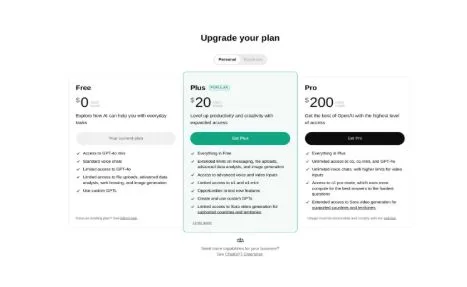Why Every Website in South Carolina Now Looks Like It Was Designed by NASA (and How That Happened)
Let’s get one thing straight right away — web design in South Carolina is no longer just a local scene of mom-and-pop shops hiring someone’s cousin to make a homepage. Something has changed—a lot. Suppose you’ve clicked through business websites across Columbia, Charleston, or Greenville lately. In that case, you may have noticed the impossible: websites that load at warp speed, actually work on your phone, and don’t scream “I was built in 2006 using Dreamweaver and good intentions.”
I’ve seen this shift up close. We’re talking about design and functionality that echoes the sleek interfaces of NASA dashboards, only now applied to real estate agencies, florists, and even your favorite food truck. And it’s not some fluke. It’s the result of talent, tech, and a regional mindset that decided it’s tired of bad UX and templated design.
So, how exactly did South Carolina — known for sweet tea, Spanish moss, and college football — start launching digital experiences that feel like they belong on the Kennedy Space Center command panel?
Let’s pop the hatch and take a look.
The NASA Metaphor Isn’t a Joke
You might think I’m being dramatic with this NASA comparison, but bear with me.
NASA’s interface design, especially in recent years, is known for four things: precision, speed, clarity, and redundancy. Oddly enough, these are the same things businesses now demand from their websites — whether they realize it or not. You want your site to:
- Load instantly
- Work across all browsers and devices
- Make it dead simple for users to find what they need
- Never break or lose data, even when traffic spikes
In other words, today’s sites need to be engineered, not just designed.
And the teams behind web design in South Carolina, especially at places like Web Design Columbia (WDC), have quietly figured out how to combine visual brilliance with engineering-grade logic. The result? Homepages that feel like mission control.
Goodbye Templates, Hello Telemetry
In the early 2010s, most business owners in this region followed the path of least resistance. That usually meant signing up for Wix, Weebly, or Squarespace, slapping together a few images, and calling it a day. The sites weren’t good, but they were good enough. Until they weren’t.
Fast-forward to now, and business owners are seeing the difference between a pretty site and a high-functioning digital experience. That’s when the shift began.
At WDC, for instance, we’ve had clients come in asking for a “modern refresh” only to discover that what they need is a comprehensive backend audit, a performance boost, and an SEO strategy that aligns with user behavior. In other words, the aesthetic is just the skin — the fundamental transformation happens under the hood.
Local Demand, Global Expectations
Here’s the paradox that sparked the design evolution in South Carolina: our businesses are local, but their audience expectations are global.
If someone lands on your site in Columbia, they’re not comparing it to the boutique next door — they’re comparing it to Apple.com, Airbnb, or the last Shopify checkout they used.
That means if your restaurant site takes 6 seconds to load on a mobile phone, you’ve already lost them to a competitor, or worse, to DoorDash.
Web design in South Carolina has caught up to this truth.
Suppose you think that sounds overkill for a plumbing business. In that case, I’ll point out that one of our plumbing clients secured commercial contracts thanks to a beautifully designed quote-request funnel and a performance score that outperformed 90% of local competitors.
NASA doesn’t launch unless all systems are go. Neither should your website.
Where Did All These Experts Come From?
Here’s a behind-the-scenes fact you won’t read in marketing brochures: a lot of South Carolina’s web talent used to be elsewhere.
Many of the designers, developers, and digital strategists now working from coffee shops in Charleston or co-working spaces in Columbia cut their teeth in tech hubs like Austin, Seattle, or even abroad. Some burned out on the coastal grind and returned home. Others came here during the remote work boom. And some, like us at Web Design Columbia, have always known that the South has something better to offer — lower costs, loyal clients, and a lack of interest in chasing VC funding every quarter.
We’ve seen a brain gain, not a brain drain.
And with that has come an explosion of expertise in areas like custom WordPress development, advanced Shopify builds, full-stack business tools, ADA compliance, and enterprise integrations.
When you combine that technical depth with the charm and straight talk of the South, something rare happens: web design that doesn’t feel like it’s trying too hard, but still delivers mission-critical results.
Why Clients Are Demanding More (and Paying for It)
Another major catalyst in this shift has been the changing expectations of business owners.
A decade ago, websites were still seen as optional — “just a business card online.” But now? Websites are active sales funnels, customer service reps, and product demo booths all rolled into one.
In South Carolina, business owners have begun to realize that a cheap $500 website isn’t just aesthetically unappealing — it’s also costing them thousands in lost conversions, poor user experience, and subpar SEO.
They’re asking more thoughtful questions now, like what their Core Web Vitals scores are or why their bounce rate spikes on mobile.
At WDC, we’ve had lawyers, HVAC pros, and even nonprofit directors call us asking about performance optimization — words that wouldn’t have appeared in the same sentence with “web design” five years ago.
This rise in technical literacy is changing the entire landscape.
The Quiet Confidence of WDC and Others Leading the Charge
At Web Design Columbia, we’ve stopped trying to convince people that design matters. Because the people who care? They already know. And the ones who don’t? They’ll come around when their competitor starts ranking above them.
What sets us apart isn’t that we build “pretty” websites — though we do — it’s that we build performant, scalable, strategic websites that feel like a NASA team engineered them on deadline and caffeine.
However, we also ensure that your users don’t need a degree in astrophysics to navigate it.
That balance between elegance and logic is the sweet spot we aim for every day.
The Tech Stack Is the Rocket, Not the Paint Job
Let’s talk tech — not just design theory, but the actual stack that powers this new generation of South Carolina websites. You know, the stuff that no one brags about during coffee meetings but makes or breaks your user experience.
We’ve reached a point where responsive design is the bare minimum. Now, clients expect clean codebases, component-driven frameworks, and server-side rendering that doesn’t crash under heavy traffic. And here’s where it gets NASA-level intense: sites in South Carolina are now being built with tools like React, Next.js, headless CMSs, and robust cloud hosting setups.
If that sounds like overkill for a local bakery, you haven’t seen what happens when someone’s ecommerce feature breaks on a Saturday morning. Trust me, even cake deserves uptime guarantees.
At Web Design Columbia, we treat even the simplest sites as if they’re part of a larger mission — because eventually, they are. Businesses grow. And you don’t want to rebuild the engine mid-flight.
Not Just Developers — Mission Control Operators
One of the biggest myths about web design is that it’s a one-person job. It’s not. Building a site that performs like a NASA spacecraft requires a whole digital crew.
At WDC, that crew includes:
- UX/UI designers who study behavioral patterns like they’re decoding alien signals
- Back-end developers who architect databases with the same precision as satellite telemetry engineers
- SEO strategists who analyze metadata the way scientists analyze moon rocks
- QA testers who intentionally try to break things (and usually succeed)
- DevOps specialists who keep things flying even when traffic surges like a shuttle launch
This isn’t a cute metaphor. It’s how modern, scalable digital products are built — collaboratively, intentionally, and always with the future in mind.
Why South Carolina Culture Helps Tech Soar
Here’s something you don’t hear every day: Southern work culture makes websites better.
There’s a reason clients stick with companies like Web Design Columbia year after year — it’s not just the output. It’s the process and the values behind it.
We listen carefully. We speak plainly. And we take pride in solving complex problems without sounding like we’re reciting a Wikipedia page about JavaScript frameworks.
That Southern grounding — practical, relational, honest — filters into every line of code and every client interaction. We build with heart, but we ship with precision.
The Unexpected Benefits of Building Like NASA
What happens when your site is engineered for performance, instead of just decorated for show? These are the repeat outcomes we see when businesses take the NASA-grade route:
- Better SEO rankings, thanks to fast load times and structured data
- Lower bounce rates, because users don’t give up halfway through
- Increased conversions, due to optimized forms and flows
- Improved accessibility, opening the site to more users, and better compliance
- Scalability, meaning you won’t need a redesign when your traffic doubles
That’s what performance-driven design does — it prepares you for what’s next, not just what’s now.
Template Builders vs. NASA-Level Custom Sites
Let’s look at the difference between typical template-based sites (like what many small businesses used in 2015) versus the custom-engineered websites being produced by today’s top web design teams in South Carolina:
| Feature | Template Site (Wix, Squarespace) | NASA-Level Custom Build (WDC-style) |
| Load Speed | 3–6 seconds | Under 1.5 seconds |
| Mobile Optimization | Basic | Custom-tailored per device |
| SEO Structure | Limited | Fully structured, with schema markup |
| Accessibility | Rarely addressed | WCAG 2.1 compliant |
| Scalability | Difficult | Built to expand with business needs |
| Backend Flexibility | Minimal | Full API and CMS integration |
| Ownership | Tied to the platform | 100% yours, portable anywhere |
| Cost Over Time | Hidden fees + reworks | One-time solid investment |
It’s not just about flashier visuals — it’s about longevity, control, and tangible ROI.
The Link That Lands It: Your Next Step
You’ve read the metaphors, seen the logic, and (hopefully) smiled at a few analogies. But if there’s one thing to take away from this article, it’s that web design in South Carolina has hit a new altitude.
Whether you’re a startup, a nonprofit, or an established business, the next step isn’t a bigger logo or a nicer shade of blue — it’s building a site that actually works for your users and your business goals.
That’s where Web Design Columbia comes in. If you want a site that runs like a well-oiled machine without losing its human touch, visit us at webdesigncolumbia.us. We’ll get you off the launchpad — and keep you in orbit.
Build for the Mission, Not Just the Moment
It’s easy to build a website that looks good on launch day. The real challenge? Building one that still works when your business has doubled, when your team has changed, and when your industry has evolved.
That’s what South Carolina’s best web teams are doing right now. We’re not just giving you a homepage. We’re giving you a digital spacecraft, ready for the long haul.
Because when your site is built like NASA built its rockets, failure isn’t an option.






